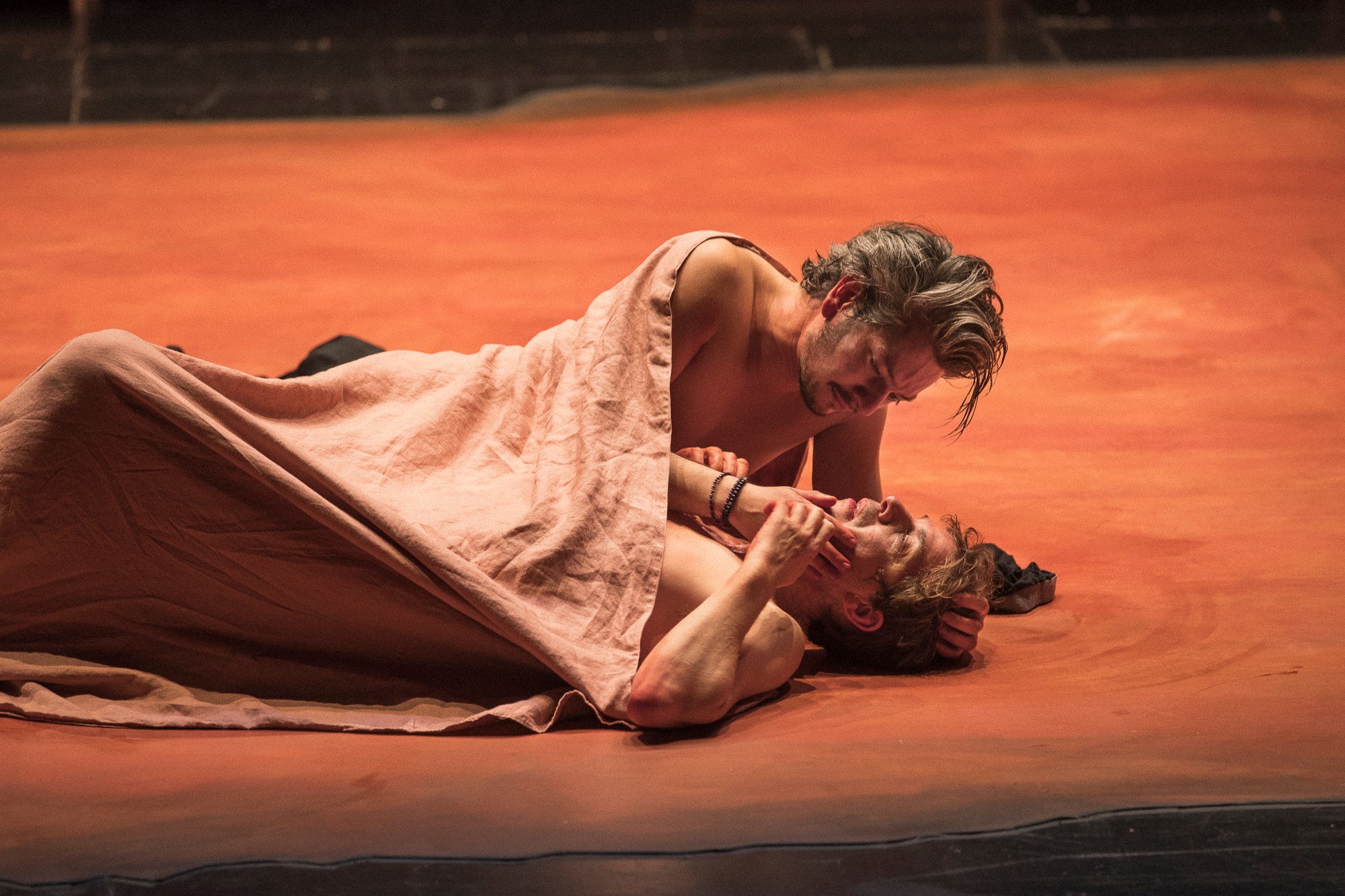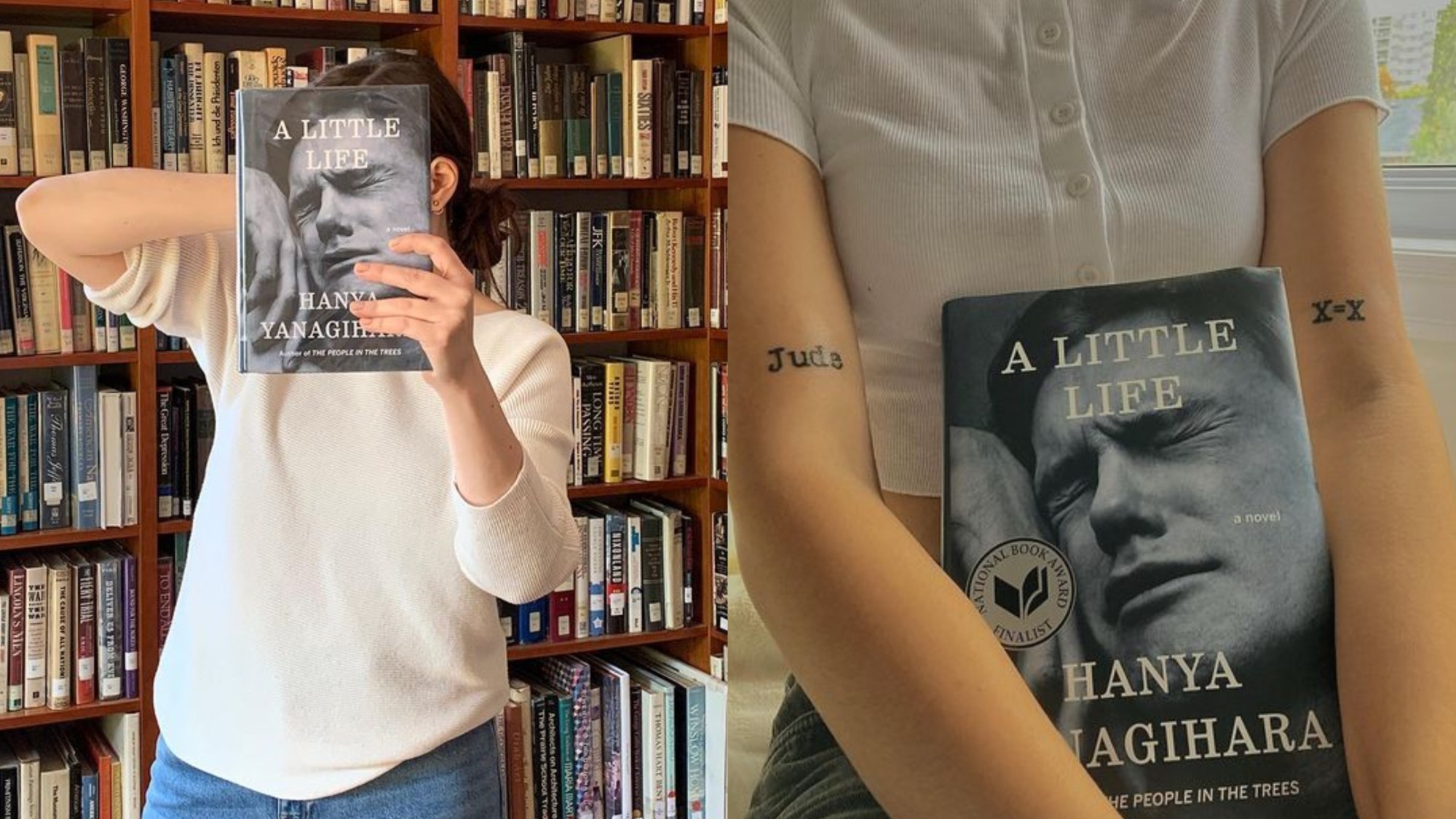When you mention Hanya Yanagihara’s A Little Life, most people have something to say.
“Ah yes, I have thoughts.”
“It was difficult to get on a train in New York City in the summer of 2016 and not see someone reading this book.”
“Too long.”
“Literary equivalent of BDSM.”
“Only book that has ever made me cry.”
“Reads like watching a movie.”
“Reads like watching a car accident.”
Many readers even know where they were — mentally and physically — as they made their way through it.
Corey Blitz, now 31, was in his mid-twenties working in investment banking. He couldn’t read at his desk, but also couldn’t put the book down. So, he would make the bathroom his library and leave with tears in his eyes.
Erika Veurink was, in her words, “deeply 22,” often found taking long walks in Manhattan and audibly gasping when she passed street signs featured in the novel. She didn’t know she was bisexual at the time, but was reading the book alongside a friend of hers who she just so happened to fall in love with. “It afforded us this closeness,” she shares. “It felt like we were way more connected than any mini book club should be.”

Charlie Akre was working at Ippudo in New York, where most of his fellow hosts and coworkers were also reading the book. Marquita Amoah didn’t go to work the day after she finished it, which was, only three days after starting, because she had stayed up until 5 a.m. to reach the end. Shai Wallman was living in the city with three of his childhood friends just like the book’s characters, and, just like the protagonists had in their early twenties, spent his time trying to find the cheapest ramen spots.
Perhaps nearly everyone has a personal story that accompanies the 800+ page novel because, as Bedstuy resident Christine Millard puts it: “it allows us to feel overpowering emotion, but with no stakes.” After all, as our exposure to war, systemic violence and death increases in volume and pixels, we’ve collectively accepted a certain level of numbness as a means of mental survival. With A Little Life, one can theoretically read about child molestation, grotesque physical abuse and suicide, and then, well, close the book on that trauma. But even if it serves as a way to compartmentalize emotion, what many fans have expressed is that they, to some degree, relate to the book’s main character.
A Little Life follows four men — Jude, Willem, JB and Malcolm — from college to late adulthood, recounting the ups and downs of their friendships, professional aspirations and internal suffering. As the book progresses, the author hones in on one of the four, Jude, who can’t seem to escape his childhood demons, in his words, “hyenas,” that have built an iron-clad armor of self-loathing around him. “I was very intrigued by the dissonance between Jude’s perception of himself and others’ pretty blatant adoration of him, how much he dazzled and mystified his friends and the people around him,” shares Beau Dealy, a literary scout in Brooklyn. While packaged in a hyperbolic narrative, Hanya poignantly captures this sense of otherness — of being misunderstood, of being discovered as a fraud and then abandoned — that exists in many of us in spite of a community of supporters. All the while, readers are able to absorb and even see themselves in these feelings through language that remains literary without being too inaccessible.
Regardless of how or why the story resonates, the book, published in 2015, continues to amass a cult following. Its zeitgeist resurgence (though, did it ever really disappear?) could partly be due to its upcoming stage adaptation by Director Ivo Van Hove, which opens on October 20 at the Brooklyn Academy of Music (BAM) and will run for just one week. And just as superfans flock to witness the beautiful tragedy on BAM’s proscenium — Charlie has himself bought three tickets to three separate shows in three separate sections of the theater — so too have critics taken to voicing their concerns about the book and its themes.
Even big fans start off by saying the book is too long. At a whopping 814 pages, readers like Marquita — who has read A Little Life multiple times — believe it could have been condensed; and that Hanya could have tried to tackle less in her prose. But for some, that’s the point. Kristin Curtis — who read the book nearly five years ago and started a trend amongst friends where they would exchange selfies while sobbing once they made it to the end — still remembers how it “became the book that was always under my arm.” For Georgie Reading, the page count is why she feels connected to the story and its characters in the first place. “The length is reflective of being in a mentally unhealthy space,” she says. “Time passes more slowly and you feel all of the details more than someone breezing through life.” And for Rachel Whelan, who finished the book just this summer, the sheer amount of years A Little Life covers creates space for readers of all ages. “At any point in your life — reading it today, or five years ago, or 10 years from now — there’s something you can pull out of the book,” she says.
But in its effort to cover decades (and a laundry list of themes), Marquita goes on to argue that character identities can get lost. “I think Hanya fails her Black characters,” the Bronx native shares when discussing JB and Malcolm, the two Black male protagonists. “I don’t expect non-Black people to talk about the nuances of blackness, but there’s no world in which those two wouldn’t have had some type of relationship where they discussed their race.” Of course, this brings in the larger question within art discourse: can an author (or filmmaker, or director or general creator) effectively write characters whose identity does not mirror their own?

Which brings us to perhaps the most voiced negative reaction: the book’s torture of Jude, a man whose sexual relationships are, from what we read, exclusively with men, starting with abuse and ending with one long-term, consensual relationship with his best friend. For Christine, who says the book has been the source of many an emotional argument, A Little Life “plays off this intense violence and abuse that’s been targeted at queer people as long as we’ve been around, and Hanya knows that. She knows people are more ready to observe queer people and people of color in pain.” Of course, she’s not wrong. Sensationalizing the pain of marginalized folks is a tool of the oppressor, a way to strip joy and healing from certain communities. But for every Christine, there is a Charlie who says the treatment of Jude feels emblematic of his own experience. For him, the book reiterates how “so many of us feel abused and used by people and systems.”
For those of us who have read A Little Life, whether a fan or critic, there is one point that Erika emphasizes that rings true: “When you match with another person and realize they’re also an A Little Life person, there’s this moment of instant connection. It’s like, if you can tolerate this, then we can cut the bullshit.”
As someone who has lost a father to suicide, who has experienced through osmosis the impact of a loved one’s self-loathing, reading this book was almost… healing. With distance from my own loss (and therapy), becoming intimately intertwined with a character like Jude — and those around him — was cathartic. Unlike many, I didn’t sob while reading it. Instead, the ending brought me a sense of peace.
And so, it bears repeating: when you mention Hanya Yanagihara’s A Little Life, most people have something to say.
Subscribe to i-D NEWSFLASH. A weekly newsletter delivered to your inbox on Fridays.


